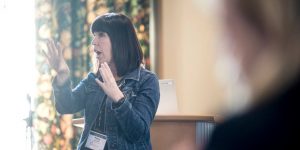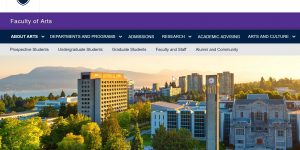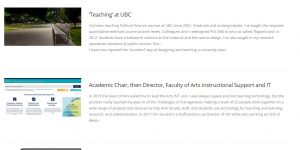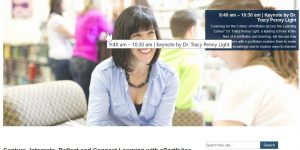1. Background: Educational and Career Outcomes for Arts: New Paradigm Project
From 2015-2108, the Faculty of Arts mounted a project called "Educational and Career Outcomes for UBC Arts Students: Towards a New Paradigm." The objective was to help students connect their academic activity to their awareness of and preparation for the transition to their career. Eportfolios were a crucial piece of the puzzle, becoming a real keystone for this project's objectives. However there were technology challenges and they were too rooted in courses. A better solution was needed.





